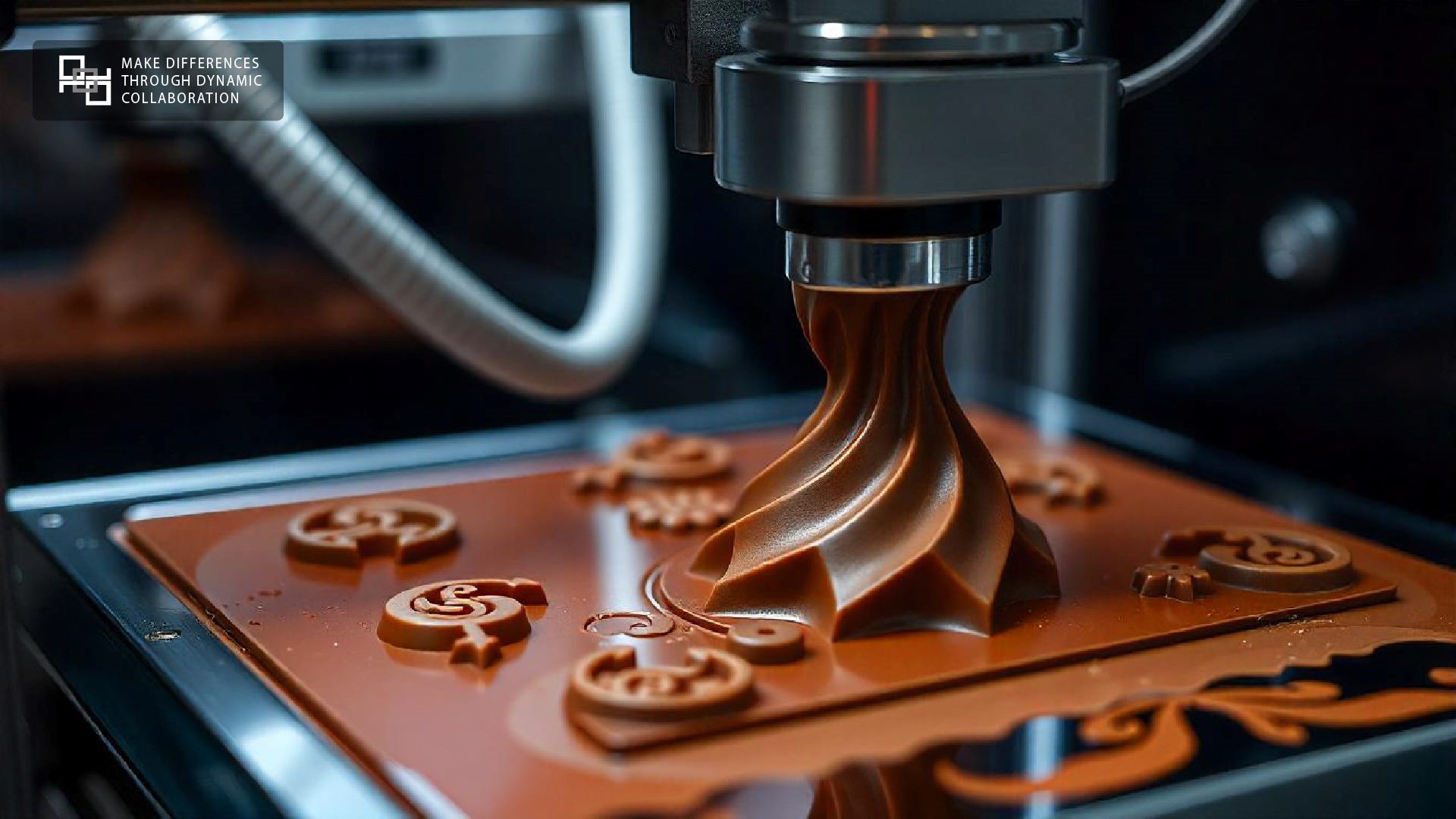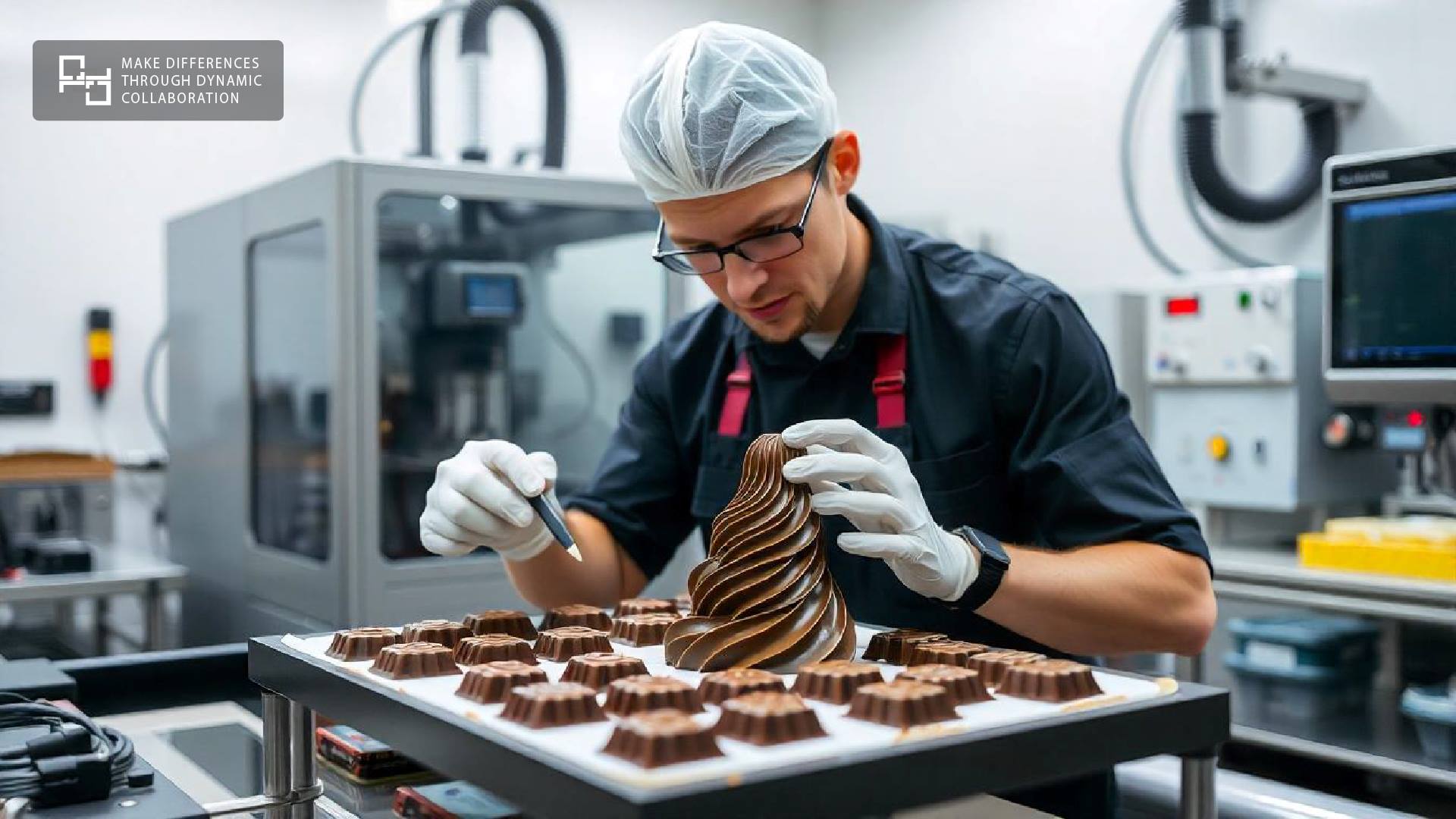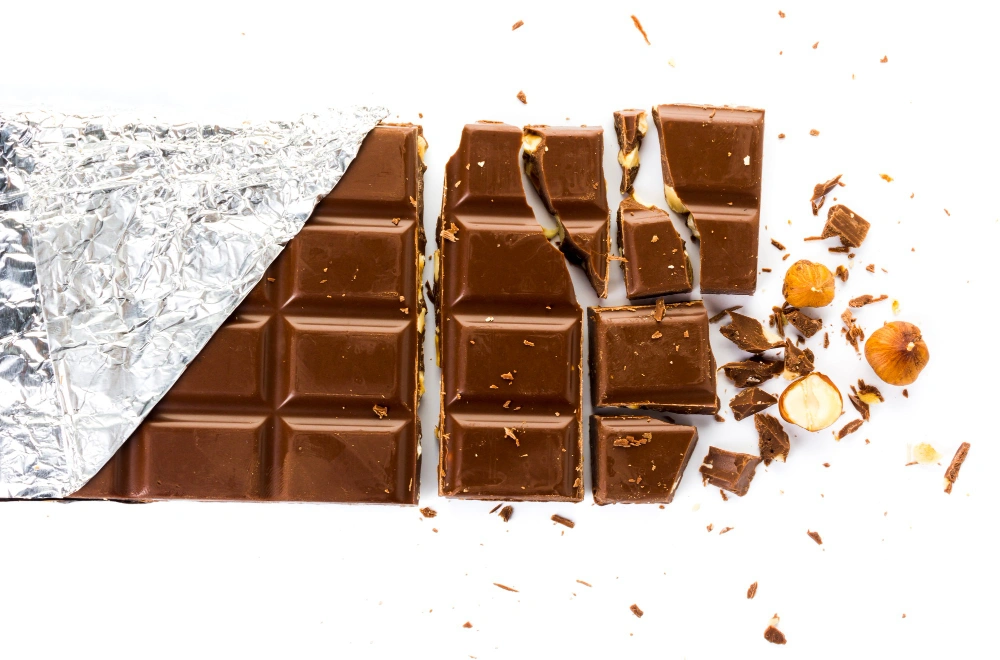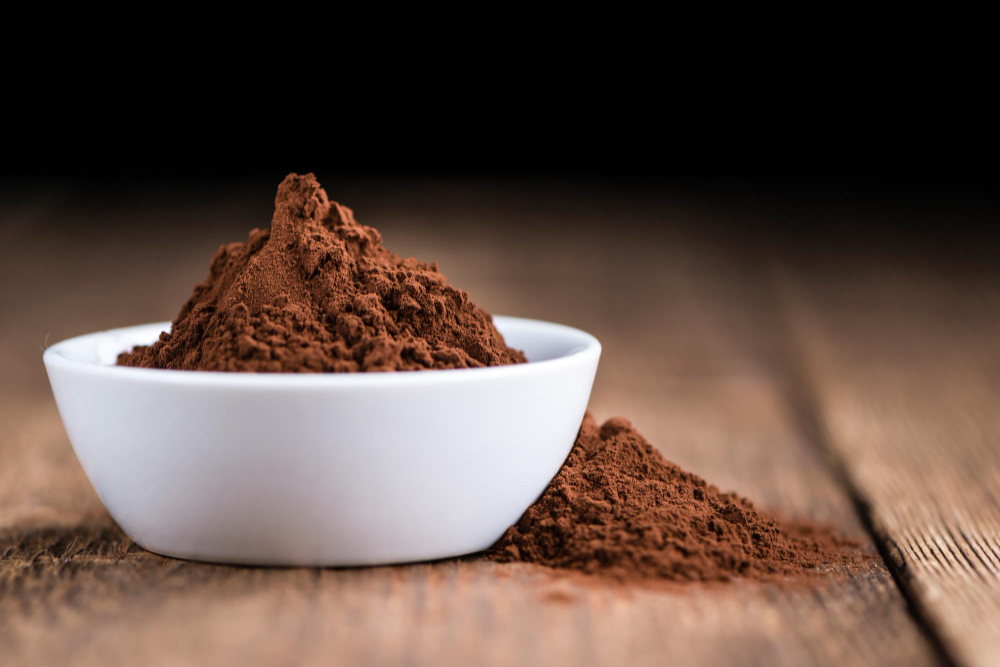Introduction: A Gateway to a New World with 3D Chocolate Printing
The pastry industry has always been in search of innovation and creativity in product production. From traditional techniques to modern methods, each has played a role in transforming this industry. However, today, 3D printing, especially in the field of chocolate, has become one of the most striking innovations. The 3D chocolate printing technology allows the creation of unique and extraordinary designs that were once only in the minds of designers and manufacturers. In this article, we will explore the various aspects of 3D chocolate printing technology using XYZPrinting devices, highlighting its advantages and impact on the pastry industry. The keyword “3D chocolate printing” will be mentioned at least 10 times in this article to provide optimized content for search engines while answering user needs.

History of 3D Printing in the Food Industry
3D printing was initially used in industries like automotive and healthcare, but it gradually made its way into the food sector. The first 3D food printers were introduced in the early 2000s, but 3D chocolate printing gained significant attention in recent years. Companies like XYZPrinting and Choc Edge have pioneered this field by designing high-precision chocolate printers. Today, renowned brands like Lindt and Godiva also utilize this technology.
How Does 3D Chocolate Printing Work?
The operation of 3D chocolate printers is similar to other 3D printers. These machines use a chocolate reservoir and specialized nozzles, through which melted chocolate is applied layer by layer to create the final design. The precision and quality of this process are such that even the most intricate details can be printed. Additionally, XYZPrinting’s printers use advanced software to design and adjust patterns, enabling manufacturers to easily execute customized and unique designs.

Applications of 3D Chocolate Printing in Various Markets
3D chocolate printing has found its place in various markets. In the pastry and confectionery industries, this technology helps produce products with attractive and creative appearances. For example, luxury hotels and restaurants use this technology to create customized chocolates for special events such as weddings and exclusive gatherings. Additionally, in the advertising industry, different brands can use 3D-printed chocolates as creative promotional tools. Major brands can produce custom chocolate logos and offer them to their customers, which helps increase engagement and create a unique and personalized experience for clients.
Advantages of 3D Chocolate Printing
- High Customization: With 3D chocolate printing, manufacturers can customize their products according to specific customer needs. This feature not only helps distinguish products in the market but also provides a more personalized experience for consumers.
- Cost Reduction: 3D chocolate printing can play a significant role in reducing production costs. Since the method allows for precise material consumption, the wastage of raw materials is minimized. Additionally, production time is shortened, resulting in increased efficiency.
- High Quality: 3D chocolate printing provides very high precision and quality. These devices are capable of producing chocolates with smooth and uniform surfaces, resulting in higher-quality final products.
- Design Variety: One of the greatest advantages of 3D chocolate printing is that manufacturers can create intricate and unique designs using this technology. Designs that were previously impossible to produce using traditional methods can now be realized.

Impact of 3D Chocolate Printing on the Supply Chain
One of the areas where 3D chocolate printing has had a significant impact is the food product supply chain. This technology allows manufacturers to produce high-quality products in smaller quantities. Since 3D chocolate printing enables customization of products, companies can quickly respond to changing market demands and produce their products without the need for large pre-production runs. This helps reduce raw material wastage and associated storage costs. Moreover, 3D chocolate printing, as an efficient method of producing products at the point of consumption, can also help reduce transportation costs.
Success Stories of 3D Chocolate Printing
Several major companies in the food and pastry industries have utilized 3D chocolate printing. One such company is XYZPrinting, which, using its advanced technology, has helped various companies bring creative products to the market. Companies like Lindt and Godiva use this technology to produce custom products in their stores, improving the customer experience. Additionally, at international events such as food exhibitions, renowned brands showcase their creativity using 3D chocolate printing, introducing new products to the market.
The Future of 3D Chocolate Printing
3D chocolate printing is just in its early stages. With ongoing advancements in 3D printing technologies and raw materials, it is expected that this technology will expand into more sectors of the food industry and even other industries. In the future, we may witness the printing of other food products like biscuits, pastries, and even beverages using 3D technology. Furthermore, as demand for customized products increases, 3D chocolate printing could play a key role in offering unique experiences to customers.
Lessons from 3D Chocolate Printing
Given the innovations in 3D chocolate printing, several important lessons can be drawn for the food industry:
- Innovation as a Competitive Factor: Companies that use cutting-edge technologies like 3D printing can gain a significant advantage over their competitors.
- Customization as Added Value: Given the diverse needs of consumers, product customization can be one of the key factors of success in future markets.
- Efficiency in Production: 3D printing not only improves the production process but can also help reduce costs and increase productivity.






